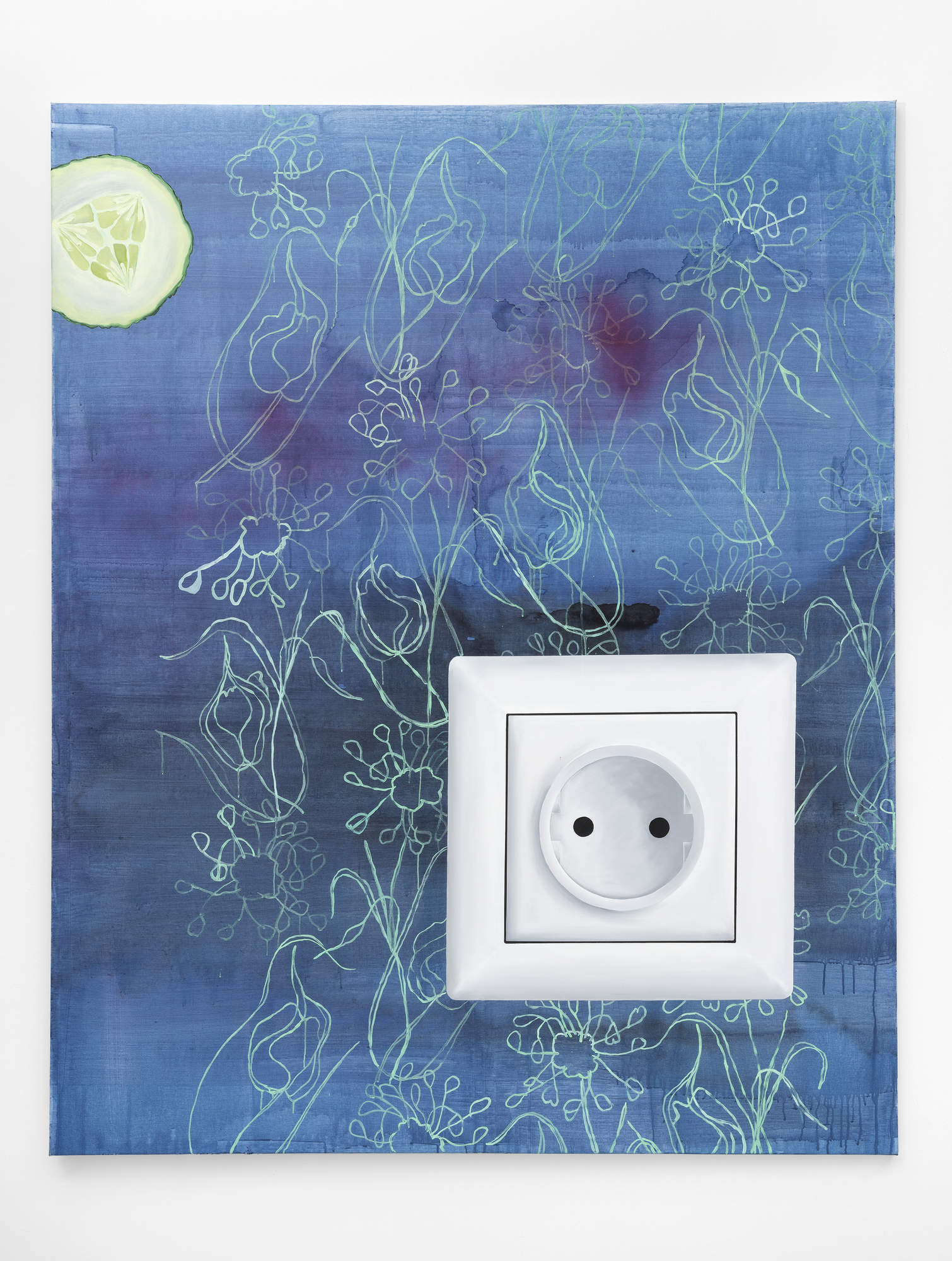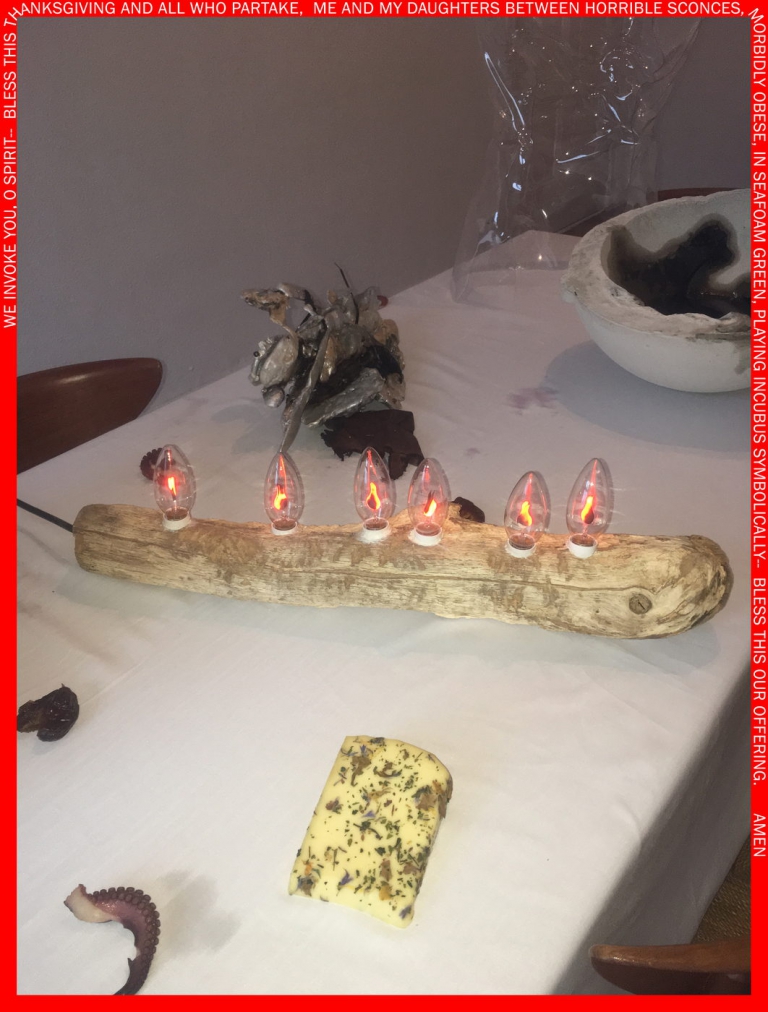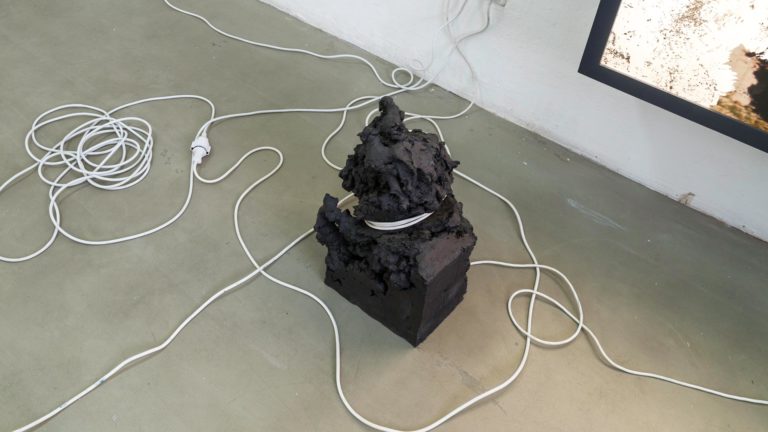Artist: Jagoda Bednarsky
Exhibition title: Introverterior/Extroverterior
Venue: Kunstverein Heppenheim, Heppnheim, Germany
Date: June 22 – July 29, 2018
Photography: all images copyright and courtesy of the artist and Kunstverein Heppenheim
Introverterior/Extroverterior
by Hendrike Nagel
Interior: the inside of a building and its furnishing (interior architecture, spatial design, furniture). Introverted: inward-looking, oriented towards oneself rather than other people. Exterior: the outward, outer side or superficial appearance. Extroverted: oriented toward contact with other people.
While we generally tend to associate the notion of “contamination” with a state of soiling, even a process of infection, in the context of morphology, such a notion may be applied to the blending of words. A phonetic contraction and linking of the underlying meanings crea – tes word-crossings that bring forth a new connotation of hybrid character. This process of merging crops up in a range of ways and brings a bearing to the different levels of content opened up in Jagoda Bednarsky’s solo exhibition Introverterior/Extroverterior at Kunstver-ein Heppenheim. Through such linguistic contamination, the exhibition title connects not only two languages, but also the outward and inward gestalt of human and space, subjecti-vity and objectivity. As such it befittingly reflects the synergetic nature of Bednarsky’s pain-terly oeuvre, which culminates in its spatial enactment.
In-keeping with this, the Berlin-based artist opens up new contexts on her seven canvases lining the walls of the exhibition space by bringing disparate elements together. While the pieces “Rośliny ozdobne I & II” transport decorative – almost kitsch – flower decorations in front of dark backdrops, “Mitsume,” “Hitotsume,”“The Remoteness,” “Zen Dispensary,” “Nu-trition Facts,” and “Dracula” collect abstract color fields, patterns, floral themes and ghosts, cucumber slices, bottle caps, popcorn and plug sockets. These couplings appear associati – ve and allow Bednarsky to construct her very own sensitive visual world, which gathers up a diverse range of levels of reality in our world to form a new, meaningful dialogue. In doing so she draws on found objects, images and patterns, reflecting various reference systems such as structures, graphics, coffee table books, photographs, books or lexicons. Classic painterly shapes and decorative ornament are unified with items of everyday use and mundane themes, while the natural – and supernatural – is melded into a symbiotic struc-ture with the artificial. In all of this, Bednarsky’s works almost analytically follow a repeating principle of back, mid and foreground: Abstract color fields, painstakingly painted patterns, and objects placed in front of these – which are rendered in a comparatively detailed way – bring forth an independent and ambivalent, space-referencing structure that evidently adheres to its own, specific laws and seems to be permanently renegotiating its own levels of meaning within a relationship oscillating between disparity and convergence. Alternating between surface and depth, illusion and abstraction, extroversion and introversion, the paintings locate each of the visual elements in its own perspective/dimensionality. Swit-ching between worlds, the pictorial objects thus postulate a state between authenticity and symbolism, representation, and artistic interpretation. This gives rise to a dialogue between the seemingly secondary and that which takes center stage, between inside and outside, structuralism and poetry: A dialogue more indebted to subjectivity than to representational objectivity. As a consequence, Bednarsky’s painterly synergies begin to produce their own new auratic energy fields, pointing to a reality beyond our everyday awareness.
A bit like Alice in Wonderland, viewers find themselves confronted with a visual world here that suspends our accustomed visual habits and makes a repositioning necessary: so-metimes things are blown up to gigantic size, at others they are miniaturized. Sometimes things are rough, then they are delicate, objects appear to be residing in the back and foregrounds at the same time. The carpet-like installation of the canvases further heightens this ambivalent impression and opens the works up into the space. Instead of emphasizing the autonomous status of painting, Bednarsky once more reflects the merging of different levels of reality through her installational set-up. The extensive hang allows the paintings to act as both backdrop to the scene and its protagonists. Instead of independence, the works declare their contextual awareness and make themselves unavoidable. As a set or background framing the space they displace the outside world and imitate – or rather create –a space of action that elevates the exhibition space to being the stage of one’s own play. The viewer is thus the element completing this artistic exposition. The exhibition
Introverterior/Extroverterior visualizes a collaged world, the boundaries of which – be they external or internal – can no longer be distinguished. A world, in which subjective and ob-jective levels intermingle in order to form new levels of meaning.




















